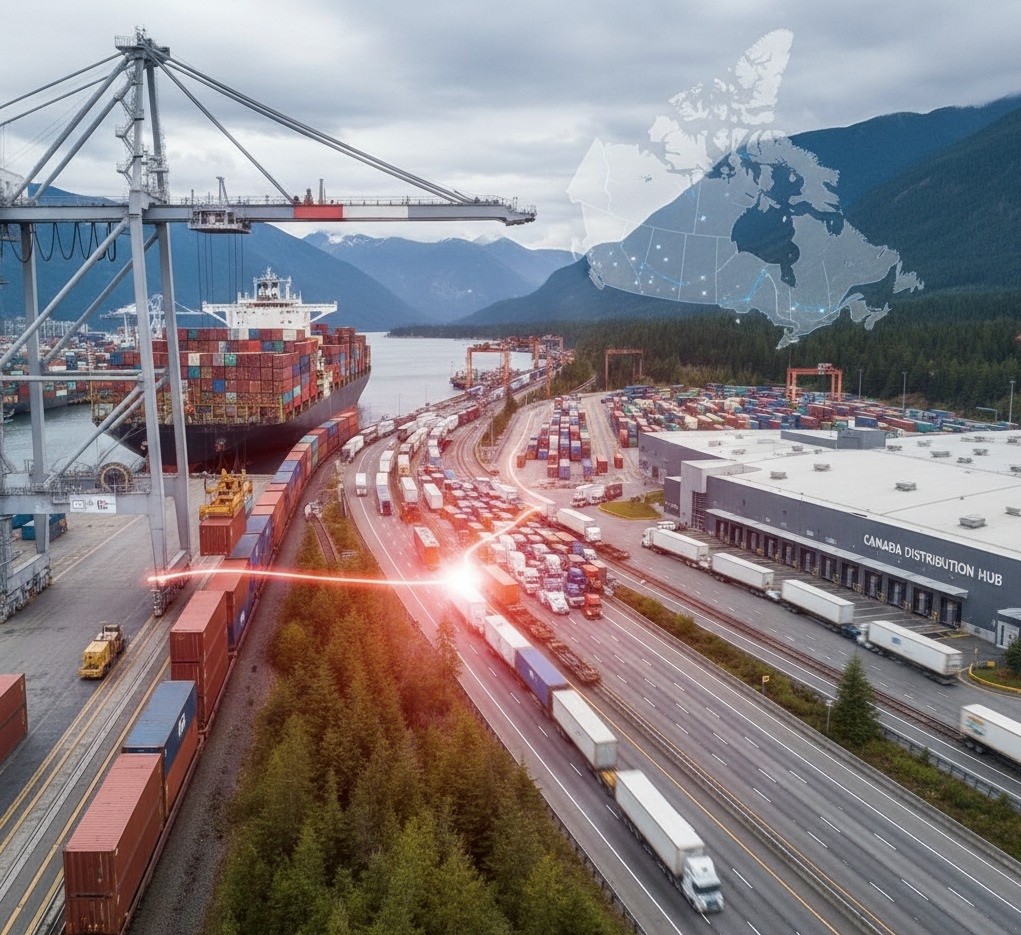Introduction: From a Global Factory to Your Front Door
The journey of a single product to a Canadian desk is a modern marvel of logistics, an intricate ballet of ships, cranes, trains, and trucks. This is the supply chain: the invisible network that functions as the circulatory system of the Canadian economy. For decades, this system operated with such remarkable efficiency that most Canadians took it for granted. However, a series of profound shocks—a global pandemic, unprecedented climate events, and paralyzing labour disputes—has exposed the inherent fragility of this network. This is the full story on Canada’s supply chain, its vulnerabilities, and its direct impact on your wallet.
Part 1: The Four Pillars of Canada’s Supply Chain
Canada’s supply chain is a complex, integrated system built upon four distinct pillars: maritime ports, freight rail, trucking, and warehousing.
- Maritime Ports: Ports are Canada’s gateways to the global marketplace, handling over 60% of our commercial marine tonnage through 17 federally managed Canada Port Authorities. The system is dominated by the Port of Vancouver, the country’s largest, which enables approximately $240 billion in trade annually.
- Freight Rail: The freight rail network is the iron artery of the nation, dominated by the duopoly of CN and CPKC. Rail is the backbone of the long-haul domestic supply chain, moving half of all the country’s exports.
- Trucking: The trucking industry is the most ubiquitous and flexible component, handling the critical “first and final mile” of a product’s journey and serving as the essential lifeline for trade with the United States. Trucks carry 54% of all Canadian exports to the U.S. and bring in 71% of all imports from our southern neighbour.
- Warehousing & Distribution: Far from passive storage, these are dynamic hubs for inventory management and order fulfillment, providing the essential “strategic pause” that acts as a buffer to absorb shocks in the system.
Part 2: The Stress Test: Canada’s “Chokepoint Economy”
Canada’s supply chain is defined by a paradox of distance and concentration. Its immense geography necessitates long supply chains, yet the critical infrastructure is concentrated in a handful of key locations known as “chokepoints.” Disruption at one of these nodes can paralyze the entire system.
Case Study 1: The Pandemic Shock (2020-2022)
The COVID-19 pandemic created a perfect storm of constrained supply and a surge in consumer demand for goods. This threw the logistics system into chaos, causing massive port congestion, soaring freight costs, and widespread business disruptions. A 2022 survey found that 85% of Canadian businesses were experiencing supply chain issues, leading to empty shelves and rising prices.
Case Study 2: The 2021 B.C. Floods
In November 2021, catastrophic flooding and landslides physically severed all major highways and rail lines connecting the Port of Vancouver to the rest of Canada. This single weather event brought a significant portion of our international trade to a halt, demonstrating the acute physical vulnerability of our concentrated infrastructure corridors to the intensifying effects of climate change.
Case Study 3: The 2023 Port Strike
In July 2023, a 13-day strike by more than 7,000 port workers in British Columbia froze operations at our two largest Pacific gateways. The dispute disrupted more than $10 billion in trade, highlighting how labour instability at a single chokepoint can hold a significant portion of the national economy hostage.
Part 3: The Price You Pay: Supply Chains and Inflation
The consequences of a fragile supply chain are felt directly in the wallets of every Canadian. When the network is disrupted, it creates a powerful engine for inflation. Businesses face increased costs for shipping and materials, which are then passed on to consumers. Analysis by Statistics Canada confirmed the powerful role of these pressures, concluding that between 2021 and 2022, a remarkable 54% of the inflation experienced in household consumption was the result of product-specific supply shocks.
Conclusion: Building a More Resilient Future
The crises of the past several years have served as a powerful wake-up call. The federal government has responded by launching a National Supply Chain Strategy aimed at investing in critical infrastructure and modernizing regulations. Businesses, in turn, are shifting from “just-in-time” to “just-in-case” models, diversifying suppliers and increasing inventories. The path forward requires a fundamental paradigm shift away from a singular focus on efficiency and toward a new emphasis on resilience and robustness to secure Canada’s economic future in an increasingly turbulent world.

